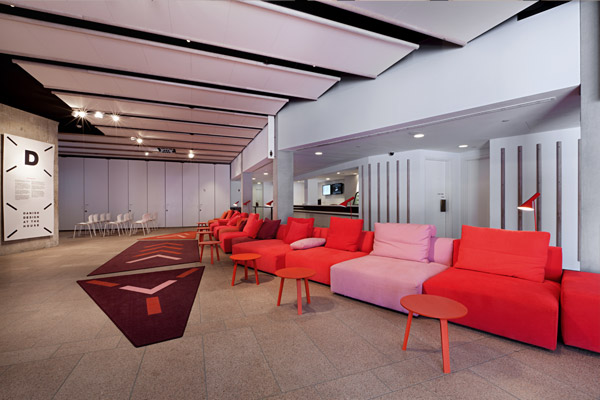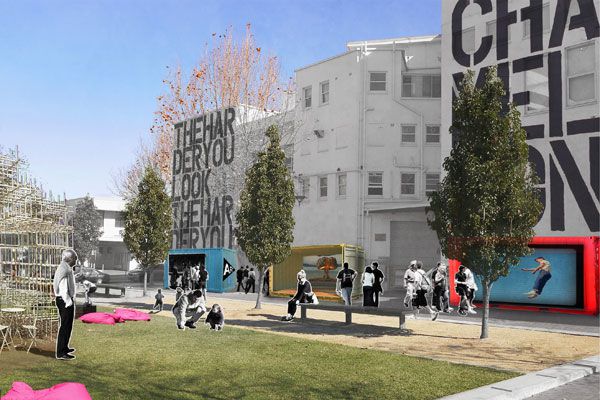With Danish design and architecture combining to draw visitors to the Sydney Opera House, Paul McGillick sits down with Danish Consul-General and Trade Commissioner, Michael Hansen, to hear about why the Nordic kingdom holds such fascination for us.

November 7th, 2013
Jørn Utzon designed only two internal spaces at the Sydney Opera House, and both not long before his death. These were the Utzon Room and the Western Foyer.
The Western Foyer, with its distinctive bay windows – with a nod to Utzon’s own house, Can Lis, on Mallorca – opened up the western side of the building.
But it has taken Danish Design at the House to fully reveal the potential of this space. Co-curated by architects, Gerard Reinmuth (Australia) and Karen Kjærgaard (Denmark), the exhibition consists of six installations (designed by six young Danish architects) celebrating Danish art and design. These focus on six themes summing up the character of Danish design – materiality, human, craft, technology, pragmatism and desire.
All this is complemented by Louis Poulsen lighting, videos and classic furniture pieces for visitors to enjoy.
The word that springs to mind is interactive. The show – for the first time – exploits the connectivity between inside and outside which the new western foyer offers. The bay windows are used as exhibition spaces which can be viewed form inside and outside.
And the show is a destination, bringing visitors into the House – something to see, a place to sit, a special experience.
Australia has had a love affair with Danish design dating back to the 1950s. It has been an on-and-off relationship, but Danish Consul-General and Trade Commissioner, Michael Hansen, says that Danish export to Australia has doubled over the last ten years.
The Princess Mary factor or appreciation of the Danish brand? A bit of both, says Hansen. But he also detects lifestyle changes having an effect. Danes entertain at home a lot because of the climate. He has noticed a greater tendency to do this in Australia in recent years.
The home becomes an entertainment space, and a place for showing off quality – food (Hansen notes the prominence of contemporary Danish cuisine) and furnishings.
“I think the new way for Denmark,” says Hansen, “is design and designer items should be affordable. They should be part of your daily living.”
Affordable quality and smart marketing. Hansen sums it up by pointing out that 80% of Australian homes have Scanpan products – products you won’t see in Scandinavia because they have been especially designed to fit the Australian way of life.
Danish Design at the House runs at the Sydney Opera House (Western Foyer) until 11 November.
sydneyoperahouse.com/danish_design_at_the_house.aspx
A searchable and comprehensive guide for specifying leading products and their suppliers
Keep up to date with the latest and greatest from our industry BFF's!

BLANCOCULINA-S II Sensor promotes water efficiency and reduces waste, representing a leap forward in faucet technology.

Elevate any space with statement lighting to illuminate and inspire.
A table designed, engineered and created to be adaptable to any setting. To be, and remain “evergreen”, an example of “good design” – design purity, functionality, class.

The Wollongong Council has unveiled the Public Spaces Public Life strategy intended to revitalise the public spaces of the city.
The internet never sleeps! Here's the stuff you might have missed

Cult has a new home, albeit temporary, and it’s sensational with masses of room to move, beautiful furniture and accessories to explore.

Designed by FARM, the newly opened Hafary House prioritises customer engagement through an immersive and sensory shopping experience. Here’s what you can expect.